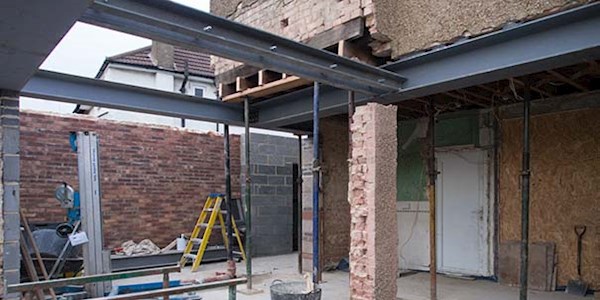
So, what are the problems and what is the impact? Factors including supply chain issues, transportation costs, the cost of materials and the availability of labour, all of which are affecting the building industry in different ways.
Building trade capacity
There is a significant capacity issue in the building industry. As a result of COVID-19 and Brexit there has been a marked decrease in the availability of skilled labour from overseas, which the construction industry has traditionally relied on. There are also less people choosing a career in construction resulting in a decreasing and aging workforce in the sector which is adding to the issue. The scale of the problem was highlighted in the construction industry training body CITB’s report last year that showed that to keep up with demand an additional 43,000 workers need to be recruited each year, however there simply isn’t the workforce available1.
Furthermore there is also a boom in construction work meaning builders can pick and choose projects that appeal, and many will prefer to work directly with end clients rather than taking on contracts in the insurance industry.
The result of this capacity crunch is that there are significant delays in the commencement of projects – which in some cases could be many months. With many businesses setting their indemnity period on their business interruption cover when there weren’t such problematic delays, some may find that the time that was allowed is not long enough to cater for the additional time needed, and they may find their business interruption coverage will run out before the building work has finished. Property owners should discuss possible extensions with their insurance broker.
Cost of materials
The cost of materials in the building trade has rocketed in recent months. The issue began in the pandemic as COVID-19 wreaked havoc on production and transportation and just as a tentative recovery was underway, the impact of the Russian invasion of Ukraine and spiralling energy prices have sparked another setback2. In fact, the cost of raw building materials is expected to more than treble this year, according to the Building Cost Information Service (BCIS) Materials Cost Index3. This means for those property owners that haven’t re-evaluated the cost of rebuilding or repairing their property may find that they are significantly underinsured. This could result in the insurer adjusting the claim – for example if a property rebuild value is 20% lower than it should be, this will mean the claim amount can be reduced by 20% and so on. Property owners should work with their broker to ensure that their insurance cover in place reflects the additional cost of materials.
Supply chain delays
Another issue facing the building industry is supply chain issues. Many materials are in short supply – with timber, bricks and steel particular problems4. The scale of the issue can be demonstrated by The National Association of Homebuilders statistics that showed in 2021, more than 90% of builders reported delays and materials shortages5. The lack of availability of materials causes problems for builders who are forced to start and then stop projects when they have a gap in materials. Transportation costs have also added to supply chain woes with the cost of fuel rising, and the availability of HGV drivers decreasing.
There are steps that property owners should consider taking to help manage the current situation including:
- Consider increasing your business interruption coverage to cater for the extended time taking to complete rebuild and repair projects
- Ensure you have an up-to-date valuation of the costs of repairs or rebuilding of your premises to cater for the increase in materials
- Speak to your insurance broker regarding additional insurance cover
- This is a brief summary of the situation to help advise businesses and individuals of the current issues that may occur if they need to make a claim. Speak to your broker who can advise on additional options to help manage these issues.


